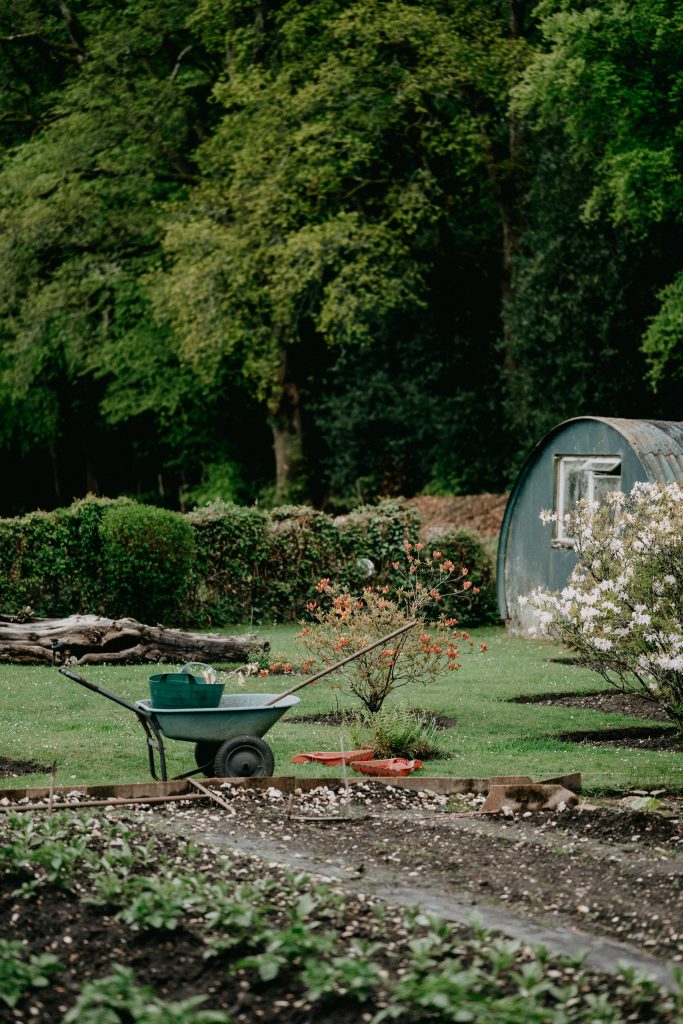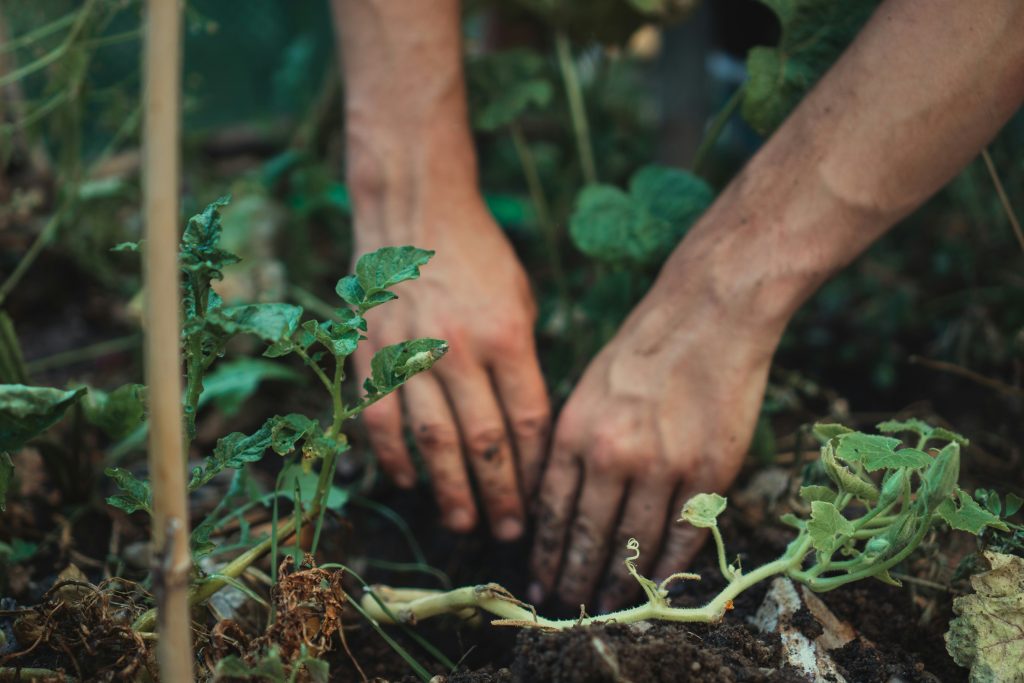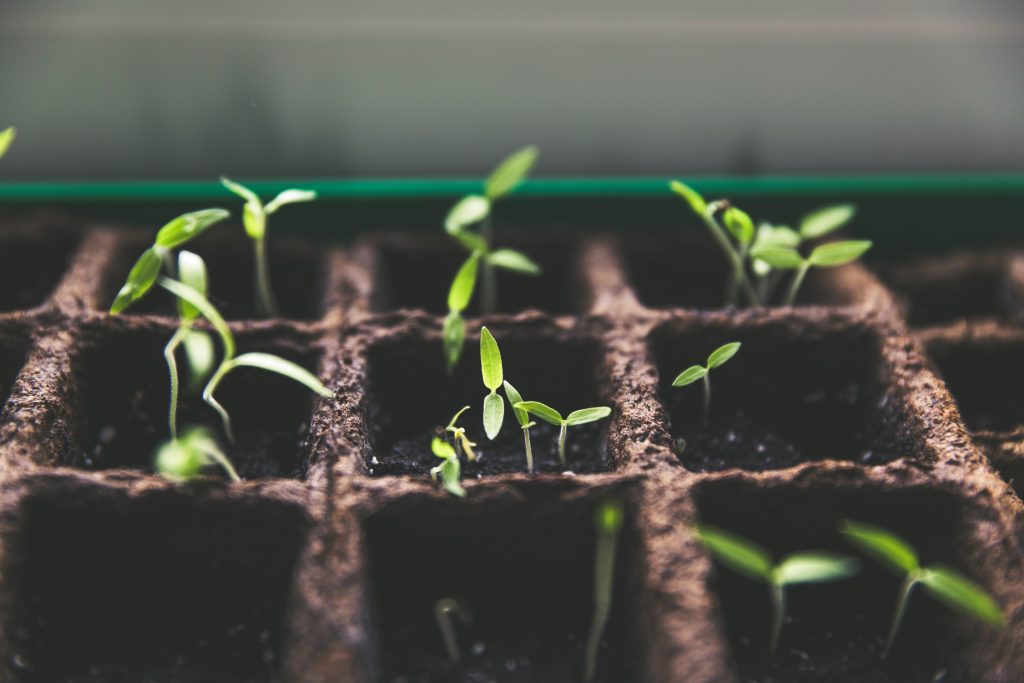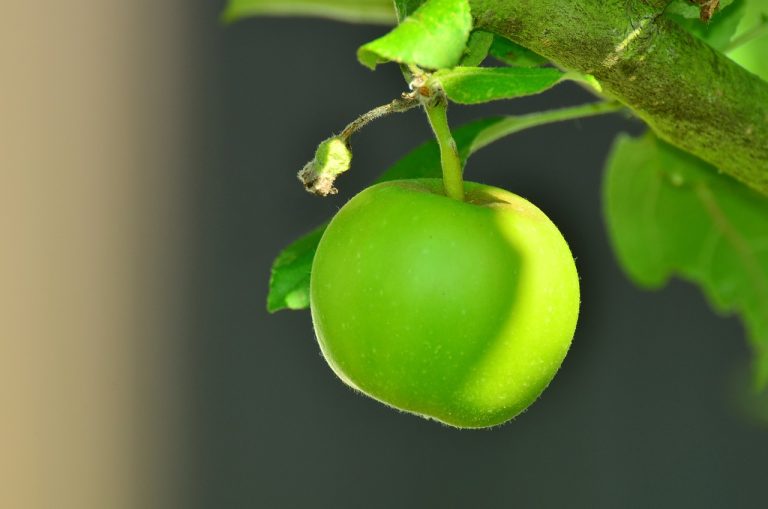So you’ve finally decided to turn your garden into a lush paradise, but you’re not quite sure where to start when it comes to improving the quality of your soil. Don’t worry, because we’ve got you covered! In this article, we’ll explore some simple yet effective strategies that will help you nourish your soil and create the perfect environment for your plants to thrive. From composting to proper watering techniques, you’ll soon be well on your way to achieving the garden of your dreams.
Table of Contents
ToggleUnderstanding Soil Quality
The Importance of Soil Quality
Soil quality plays a crucial role in the success of any garden. When your soil is healthy and fertile, it provides a favorable environment for plants to grow and thrive. Healthy soil contains the right balance of nutrients, minerals, and organic matter that plants need for optimal growth. Additionally, good soil quality promotes robust root development, efficient water absorption, and effective nutrient uptake. By understanding soil quality, you can take appropriate measures to improve and maintain it, ensuring the long-term health and productivity of your garden.
Factors Affecting Soil Quality
Several factors can impact soil quality, and it’s essential to consider them when assessing and managing your garden soil. One of the primary factors is the soil’s texture, which refers to the relative proportions of sand, silt, and clay particles. Soil structure, which determines how well particles are arranged and hold together, is another critical factor. Other factors include organic matter content, nutrient levels, pH balance, moisture levels, and soil compaction. Understanding these factors will enable you to make informed decisions on how to improve your soil and create an optimal environment for your plants.
Testing Soil Quality
To determine the current status of your soil quality and identify its specific needs, soil testing is crucial. Soil testing involves analyzing soil samples for various parameters such as pH, nutrient levels, organic matter content, and texture. By sending a sample to a reputable soil testing laboratory or using a home soil testing kit, you can obtain accurate information about your soil’s composition and identify any deficiencies or imbalances. Armed with this knowledge, you can then take targeted steps to improve the quality of your soil and provide the best conditions for your plants to thrive.
Improving Soil Structure
Importance of Soil Structure
Soil structure refers to the arrangement and aggregation of soil particles. Good soil structure is vital for several reasons. Firstly, it allows for proper air circulation and water drainage, preventing waterlogged or compacted soil. Secondly, well-structured soil provides ample space for root growth and development, allowing plants to establish themselves firmly. Additionally, a healthy soil structure facilitates the movement of nutrients, ensuring they reach plant roots efficiently. Improving soil structure is key to promoting healthy plant growth and maximizing the productivity of your garden.
Adding Organic Matter
One of the most effective ways to improve soil structure is by adding organic matter. Organic matter, such as compost, well-rotted manure, or leaf mulch, enhances the soil’s texture and ability to hold water. When incorporated into the soil, organic matter creates pore spaces, allowing for better aeration and root penetration. Furthermore, it acts as a natural fertilizer, releasing nutrients slowly and steadily for plant uptake. Regularly incorporating organic matter into your garden beds will gradually improve soil structure and fertility, leading to more productive and thriving plants.
Tilling and Aeration
Tilling and aeration are practices that can help improve soil structure and address compaction issues. Tilling involves breaking up compacted soil and incorporating organic matter or amendments. It helps loosen the soil, improve aeration, and enhance water infiltration. However, it’s important to avoid over-tilling, as excessive disturbance can disrupt the soil’s natural structure and beneficial microbial life. Aeration, on the other hand, involves creating small holes in the soil to promote air and water movement. This can be done with a garden fork or a mechanical aerator and is particularly beneficial for compacted soils.
Avoiding Soil Compaction
Soil compaction can have detrimental effects on soil structure and ultimately impact plant health. To prevent soil compaction, it’s crucial to avoid unnecessary foot traffic or heavy machinery on garden beds. Using stepping stones or designated paths can help redirect traffic and reduce the risk of compacting the soil. Additionally, practicing mulching can protect the soil surface from the impact of raindrops and minimize compaction caused by heavy rainfall. By taking proactive measures to prevent soil compaction, you can maintain a healthy soil structure and provide a conducive environment for your plants.
Enhancing Soil Fertility
Understanding Soil Fertility
Soil fertility refers to the ability of soil to provide essential nutrients to plants for their healthy growth and productivity. Fertile soil contains an optimal balance of macronutrients (nitrogen, phosphorus, and potassium) and micronutrients (such as iron, manganese, zinc, and copper). Understanding soil fertility is vital because nutrient deficiencies can impair plant growth, result in poor yields, and make plants more susceptible to diseases and pests. By enhancing soil fertility, you can ensure that your plants have access to the necessary nutrients for their overall well-being.
Adding Nutrients
Adding nutrients to your soil is an effective way to enhance fertility and provide plants with the nutrients they need. Organic fertilizers, such as compost, manure, and bone meal, are excellent options as they not only supply nutrients but also improve soil structure and microbial activity. When using organic fertilizers, it’s essential to follow recommended application rates to avoid overloading the soil with nutrients. Inorganic fertilizers, such as granular or liquid formulations, can also be used but should be applied sparingly and based on the specific nutrient requirements of your plants, as determined by soil testing.
Composting
Composting is a natural and sustainable way to improve soil fertility while reducing waste. Compost is created by decomposing organic materials, such as kitchen scraps, yard trimmings, and leaves. As the materials break down, they release nutrients into the compost, creating a nutrient-rich organic matter that can be added to the soil. Compost improves soil structure, enhances water retention, and increases microbial activity. By integrating compost into your garden beds regularly, you can enhance soil fertility and support the long-term health of your plants.
Crop Rotation
Crop rotation is a technique where different crops are grown in succession on the same piece of land. This practice can help maintain soil fertility by preventing the depletion of specific nutrients in the soil. Certain plants have high nutrient requirements, while others can replenish or utilize different nutrients. By rotating crops, you can ensure a more balanced nutrient uptake and reduce the likelihood of nutrient imbalances or deficiencies. Additionally, crop rotation can also help break disease and pest cycles, promoting overall plant health and reducing the reliance on chemical interventions.
Managing Soil pH
Understanding Soil pH
Soil pH refers to the measure of acidity or alkalinity of the soil. It is determined by the concentration of hydrogen ions in the soil solution and is expressed on a scale from 0 to 14, with 7 being neutral. Understanding soil pH is crucial because it affects nutrient availability and microbial activity in the soil. Most plants prefer a slightly acidic to neutral pH range (6.0 to 7.0), although specific plants may have different pH preferences. Monitoring and managing soil pH can help ensure that your plants can access and absorb nutrients effectively, leading to improved growth and overall health.
Testing Soil pH
Testing your soil’s pH is essential to determine its current acidity or alkalinity levels accurately. Soil pH testing kits or meters are widely available and provide a simple and reliable way to assess your soil’s pH. By following the manufacturer’s instructions, you can obtain a soil sample and perform the test yourself. Alternatively, you can send a soil sample to a reputable laboratory for more comprehensive testing. Regularly testing your soil pH, especially when experiencing growth issues or nutrient deficiencies, will help you identify any pH imbalances and allow you to take corrective measures accordingly.
Adjusting Soil pH
If a soil pH test reveals that your garden soil is too acidic or alkaline for your plants’ needs, you can adjust the pH to create more favorable growing conditions. To raise the pH in acidic soil, you can incorporate lime, such as agricultural limestone, into the soil. Lime raises the soil’s pH by neutralizing acidity. The amount of lime needed will depend on the initial pH level and the type of soil. Conversely, if your soil is too alkaline, adding elemental sulfur or acidifying fertilizers can help lower the pH. It’s important to follow recommended application rates and adjust pH gradually to avoid overcorrection or sudden pH fluctuations.
Controlling Soil Erosion
Preventing Water Runoff
Soil erosion can be a significant challenge in the garden, leading to the loss of valuable topsoil and vital nutrients. Preventing water runoff is crucial in controlling soil erosion. To minimize runoff, ensure that your garden beds are properly graded to redirect water away from vulnerable areas. Installing swales or trenches can also help capture and slow down water flow, allowing it to penetrate the soil rather than running off. Additionally, creating mulch barriers or adding vegetation along slopes can help intercept and absorb rainfall, reducing the impact of erosive forces on the soil.
Using Mulch
Using mulch is an effective method to control soil erosion and protect the soil surface from weathering forces. Organic mulches, such as straw, wood chips, or shredded leaves, create a protective layer that shields the soil from the impact of raindrops, reducing soil compaction and erosion. Additionally, mulch helps regulate soil temperature, retain moisture, and suppress weed growth. When applying mulch, ensure a depth of approximately 2-4 inches and extend it beyond the plant’s drip line. Regularly replenish the mulch as it decomposes to maintain its effectiveness in erosion control.
Terracing
Terracing is an engineering technique that involves creating level or gently sloping platforms on hilly or steep areas to control erosion. By constructing terraces, you can create steps or retaining walls that slow down water flow and prevent soil from being washed away. Terraces help capture rainwater, allowing it to infiltrate the soil instead of running off, while also providing level planting areas for your garden. Depending on the severity of the slope, terraces can be built using retaining walls, rocks, or wooden boards. Terracing is particularly effective in gardens with uneven terrain or areas prone to erosion.
Planting Cover Crops
Cover crops, also known as green manure, play a vital role in controlling soil erosion. Cover crops are fast-growing plants that are sown in between periods of growing vegetables or during fallow periods. They provide protective ground cover, preventing erosion caused by wind or rainfall. Cover crops also help improve soil structure, suppress weeds, enhance nutrient cycling, and increase organic matter content when eventually incorporated into the soil. Examples of cover crops include legumes like clover or vetch and grasses like rye or oats. By incorporating cover crops into your garden rotation, you can effectively control erosion while enhancing soil health.
Managing Moisture Levels
Importance of Moisture Levels
Proper moisture levels are essential for healthy plant growth and development. Both under-watering and overwatering can negatively impact plants and soil health. Maintaining adequate moisture levels ensures that plants can take up water and nutrients efficiently while preventing water stress or suffocation of roots. Managing moisture levels also contributes to soil structure stability, preventing compaction and promoting optimal root growth. By understanding the importance of moisture levels and implementing appropriate practices, you can maintain an environment that promotes healthy plant growth and thriving soil.
Improving Drainage
Improving drainage is crucial for managing moisture levels effectively. Excess water can lead to waterlogged soil, which deprives plant roots of necessary oxygen and can foster root rot or disease. To improve drainage, ensure that your garden beds are not overly compacted. Incorporating organic matter, such as compost or aged manure, can help alleviate soil compaction and enhance water infiltration. Raised beds or mounded soil can also improve drainage by elevating the planting area. Additionally, using well-draining soil mixes or installing drainage tiles or French drains can further enhance drainage in areas prone to excessive moisture.
Conserving Moisture
Conserving moisture in the soil is equally important, especially in dry or arid regions or during drought conditions. Mulching plays a crucial role in moisture conservation by reducing evaporation from the soil surface. Mulch acts as a protective barrier, limiting water loss and helping to maintain consistent moisture levels for plant roots. Additionally, using techniques like drip irrigation or soaker hoses instead of traditional overhead watering can reduce water evaporation and deliver water efficiently directly to the root zone. Regularly monitoring soil moisture levels will allow you to adjust watering frequencies and durations appropriately, optimizing moisture conservation.
Irrigation Techniques
Choosing the right irrigation techniques can significantly impact soil moisture management. Drip irrigation, for example, delivers water directly to the plant’s root zone, minimizing water loss due to evaporation or runoff. This method is especially efficient for gardens with closely spaced plants or narrow beds. Soaker hoses are another effective option, allowing water to seep slowly and deeply into the soil. Overhead sprinklers should be used sparingly, as they can promote disease and water loss through evaporation. Whichever method you choose, it’s important to water deeply and infrequently, ensuring that the soil is moist to the plant’s root depth without causing waterlogging.
Preventing Weed Growth
Impact of Weeds on Soil Quality
Weeds can be a nuisance in the garden, competing with your desired plants for resources and affecting soil quality. Weeds can adversely impact soil fertility by absorbing nutrients intended for your plants, and some may even release allelopathic substances that inhibit the growth of other plants. Additionally, weeds can act as hosts for pests and diseases, providing a breeding ground that can further affect the health of your garden. By implementing effective weed prevention strategies, you can maintain a weed-free environment that promotes optimal soil quality and supports the growth of your desired plants.
Mulching to Suppress Weeds
Mulching is an effective method to suppress weed growth while improving soil quality. Applying a layer of organic or inorganic mulch, such as straw, wood chips, or landscape fabric, creates a barrier that inhibits the germination and growth of weeds. Mulch prevents weed seeds from receiving light, depriving them of the conditions necessary for growth. Additionally, mulch helps retain moisture, regulate soil temperature, and enhance soil structure. By applying mulch regularly, you can significantly reduce the need for manual weeding and promote a healthier soil environment for your plants.
Hand-pulling Weeds
Hand-pulling weeds is an important task in maintaining a weed-free garden. Regularly inspect your garden beds and manually removing weeds by grasping them at the base and gently pulling them out. It’s essential to remove weeds before they have a chance to set seed or spread extensively. When hand-pulling weeds, be careful to remove the entire root system to prevent regrowth. For larger or more challenging weeds, using a hand trowel or fork may be necessary to loosen the roots before pulling. Regular weeding not only prevents competition for resources but also contributes to a cleaner and healthier garden space.
Using Herbicides Sparingly
Herbicides can be a useful tool for weed control but should be used sparingly and with caution. Chemical herbicides can be effective in eliminating persistent or invasive weeds that are difficult to control by other means. However, it’s crucial to select herbicides that are labeled for the specific weeds you are targeting and follow the instructions carefully, considering their potential impact on the environment and other beneficial organisms. When using herbicides, always prioritize spot treatments over widespread applications. Integrated weed management practices, including mulching, hand-pulling, and cultural practices, should be the first line of defense against weeds before resorting to chemical interventions.
Choosing Suitable Plants
Understanding Plant Needs
Choosing suitable plants is essential for ensuring their success and positively impacting soil quality. Different plants have different requirements for sunlight, water, nutrients, and soil conditions. By understanding the needs of different plant types, you can make informed decisions about which plants will thrive in your garden and contribute to soil improvement. Factors such as climate, soil type, and available garden space should be considered when selecting plants. Additionally, consider choosing native or adapted plant varieties that are better suited to local environmental conditions, as they are typically more resilient and require fewer inputs to thrive.
Selecting Plants for Soil Improvement
Certain plant species can actively contribute to soil improvement through their growth habits and nutrient cycling abilities. Leguminous plants, such as beans, peas, and clover, have the unique ability to fix atmospheric nitrogen into a usable form, enriching the soil with this essential nutrient. Deep-rooted plants like comfrey or daikon radish can help break up compacted soil layers and improve drainage. Plants with dense foliage, such as sunflowers or buckwheat, can provide effective weed suppression and add organic matter when incorporated into the soil. By selecting plants that actively contribute to soil improvement, you can harness their natural abilities to enhance your garden’s overall health.
Companion Planting
Companion planting involves strategically grouping compatible plants in close proximity to achieve mutual benefits. Certain plant combinations can enhance soil fertility, deter pests, attract beneficial insects, and promote overall plant health. For example, planting nitrogen-fixing legumes alongside nitrogen-demanding plants can help provide a natural source of fertility. Additionally, aromatic herbs or flowers, such as marigolds or basil, can repel pests and attract pollinators, bolstering plant protection and reproduction. Researching and implementing companion planting strategies in your garden can lead to a more resilient and productive ecosystem while naturally improving soil quality.
Using Green Manure
Green manure, also known as cover crops, can be intentionally grown and then incorporated into the soil to improve soil quality. Cover crops, like clover, buckwheat, or mustard, are sown during fallow periods or at the end of the growing season. As they grow, they capture nutrients from the soil, reducing the leaching or loss of these valuable elements. When the cover crop is mature, it is tilled or chopped and left to decompose, adding organic matter and nutrients to the soil. Green manure helps improve soil structure, reduce erosion, suppress weeds, and increase microbial activity. Integrating green manure into your garden rotation can lead to healthier, more productive soil over time.
Attracting Beneficial Organisms
Importance of Beneficial Organisms
Beneficial organisms, such as pollinators, beneficial insects, earthworms, and soil microorganisms, play a crucial role in maintaining a healthy garden ecosystem. Beneficial organisms contribute to soil fertility, nutrient cycling, pest control, and overall plant health. By attracting and supporting these organisms, you can create a balanced and thriving garden environment. Enhancing habitat for beneficial organisms not only improves the quality of your soil but also reduces the need for chemical inputs and promotes natural, sustainable gardening practices.
Creating Habitats
Creating habitats that support beneficial organisms is key to attracting and retaining them in your garden. Providing diverse plantings that offer food, shelter, and nesting sites is essential. Incorporate a variety of flowering plants to attract and sustain pollinators, whose presence is critical for fruit and vegetable production. Plant native species, as they are well-adapted to local ecosystems and provide resources for local beneficial organisms. Additionally, consider leaving patches of bare soil or incorporating insect hotels, birdhouses, or water sources to support a broader range of beneficial organisms. By creating a welcoming environment, you can encourage beneficial organisms to thrive and contribute to the health of your garden.
Using Organic Pest Control Methods
Beneficial organisms can play a significant role in pest control, reducing the need for synthetic pesticides. Introducing beneficial insects, like ladybugs or lacewings, can help control aphids, mites, and other pests. Providing nesting sites or purchased beneficial insect releases can help establish these natural predators in your garden. Additionally, encouraging birds, frogs, or bats by planting native trees or installing birdhouses can help control pest populations naturally. Implementing cultural practices, such as crop rotation, intercropping, and removing pest-infested plant parts promptly, can also help reduce pest pressure. By relying on organic pest control methods, you can safeguard the balance of your garden ecosystem and maintain a healthy soil environment.
Regular Monitoring and Maintenance
Observing Plant Health
Regularly monitoring plant health is essential for identifying potential issues and taking timely action. Observe your plants for any signs of distress, such as wilting, discoloration, stunted growth, or pest infestations. Early detection allows for prompt intervention, preventing further damage or potential spread to other plants. Regularly inspect the undersides of leaves, stems, or soil near the plant base for signs of disease, pests, or nutrient deficiencies. By keeping a close eye on your plants, you can address issues promptly, maintain soil health, and ensure optimal plant growth throughout the growing season.
Soil Testing Schedule
Regular soil testing is crucial for assessing soil quality and guiding your gardening practices. Establishing a soil testing schedule helps you monitor changes in soil fertility, pH, and nutrient levels over time. Generally, it is recommended to test your garden soil at least once every three years. However, additional testing may be necessary when experiencing growth issues, changes in plant health, or significant modifications to your garden. By adhering to a soil testing schedule, you can make informed decisions about soil amendments, nutrient management, and other practices that will enhance soil quality and optimize your gardening efforts.
Applying Amendments
Based on the results of soil testing, applying soil amendments can help address any deficiencies or imbalances in your garden soil. Organic amendments, such as compost, aged manure, or bone meal, are valuable options as they improve soil structure and provide slow-release nutrients. Inorganic amendments, such as lime or sulfur, can be used to adjust soil pH as necessary. In both cases, it’s important to follow recommended application rates and consider the specific needs of your plants. Applying amendments at the appropriate times, usually during the pre-planting or fall season, ensures that they are effectively incorporated into the soil and readily available for plant uptake.
Crop Rotation and Succession Planting
Incorporating crop rotation and succession planting practices in your garden management routine can promote soil health and optimize plant productivity. Crop rotation involves alternating the types of crops grown in specific areas to prevent the build-up of pests, diseases, or nutrient depletion. Succession planting, on the other hand, involves planting new crops as soon as previous ones are harvested, ensuring a continuous supply of fresh produce. Both practices help enhance soil fertility by balancing nutrient uptake, breaking pest and disease cycles, and maximizing the use of available garden space. By implementing crop rotation and succession planting, you can maintain robust soil health and enjoy a productive garden year after year.
In conclusion, improving soil quality in your garden is crucial for the success of your plants and the long-term health of your garden ecosystem. Understanding the factors that affect soil quality, such as texture, structure, nutrients, pH, erosion, moisture, weeds, plant selection, and beneficial organisms, allows you to take appropriate measures to enhance and maintain it. By adding organic matter, improving soil structure, managing soil pH, controlling erosion, managing moisture levels, preventing weed growth, selecting suitable plants, attracting beneficial organisms, and regularly monitoring and maintaining your garden, you can create an optimal environment for plants to thrive and achieve your gardening goals. Remember to assess your garden soil regularly, seek professional soil testing when necessary, and adjust your practices accordingly to ensure the ongoing health and productivity of your garden.









